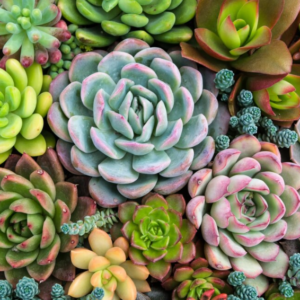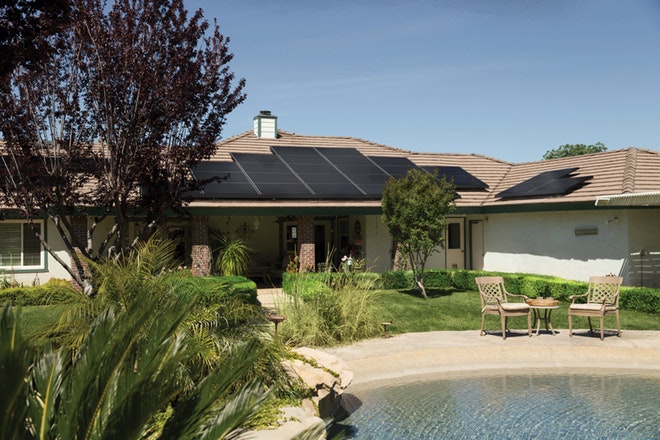The lawn in your house is probably one of the best attractions of your home. It is what visitors would see first when they walk in. It is also the space where your children would like to spend the most time. Apart from being a play space for kids, the lawn also helps to keep your home cool. This is why you need to spend some time maintaining your lawn.
If you were thinking that maintaining a lawn is too much work, don’t worry. We have some helpful landscape and lawn care tips for you for lawn maintenance. Our advice will help you maintain your lawn in the best possible way.
Five Steps To Keep Your Lawn Healthy
Your lawn will be healthy if it can breathe
Just as we need to breathe to live, your lawn also needs to be aerated so it can breathe and be healthy. Our first landscape and lawn care advice for you is on aerating your lawn.
Compacted soil is a common issue affecting lawns. This affects the circulation of air and the drainage of water. Also, the plants cannot absorb nutrients well in such soil. Aerating involves removing plugs of soils so that soil compaction is removed. Aerating also creates sufficient for roots to grow so your plants can thrive.
All you need for this job is an aerator, powered by gas. You can get it from a store and do it yourself. You can even use the best lawn care service to get the work done. Aerating involves punching holes of around 3-inch depth in the lawn. Use the handheld aerator tool to get the job done. Ideally, you need eight plugs for every square foot of lawn space.
Fall is the best time to aerate the lawn. Once you are done, your lawn will thrive. The benefits of aerating your lawn include:
- The grass gets a proper medium to grow since all plugs are broken apart to decompose.
- Microorganisms, as well as earthworms, can thrive, enriching the soil.
- The grass can make use of nutrients and water in the best possible way.
- With more oxygen, your grass and the plants will be healthy.
Water the lawn to promote root growth
You need to water the lawn deeply to promote root growth. Most people sprinkle water. This only makes the grass wet and just moistens the soil. This does not help the roots. As a result, you will need to water frequently.
Water deeply and do it occasionally. You must know that your lawn needs around one to two inches of water every week. Either you can water yourself or allow nature to do it through rains.
A question that may arise is how you would know if you have watered the lawn sufficiently. There is a simple way of checking this. Keep shallow containers throughout the lawn. Once you turn the sprinklers on, the containers start to get filled. When it reaches 1 or 2 inches as you need, turn off the sprinklers.
Make sure you spread the containers across the lawn so you know that the lawn gets water uniformly.
Another question you would have is how to know when to water the lawn again. When you touch the lawn, if you feel the first 3 or 4 inches are dry, then it is time to water again. Use a screwdriver to make a hole and then test the moistness with your fingers. You can also use an electronic soil tester to be accurate.
Early morning is the best way to water the lawn. Use impact sprinklers so that water goes to the roots; avoid oscillating sprinklers. You will get adequate water pressure, and you don’t lose water due to evaporation.
Cut grass to a tall height
Mowing the lawn is essential to keep it in good health. Leave the grass tall so that the roots grow well, allowing your lawn to flourish. This makes the grass more resistant to disease.
Mowing is easy when you have a good-quality lawnmower. While mowing the lawn, cut the grass to a tall height. The ideal height would be 3.5 to 4 inches. This is very important, especially during the summer months. If you want the work to be done in the best way, then you can consider hiring the best lawn care service provider.
Here are some tips for mowing your lawn in the best way:
- Grass can grow differently at different times of the year. So you need to mow accordingly. Sometimes you need to mow once a week and other times more than once.
- In warm weather, you should have grass of length 1-2 inches. In cool weather, you must leave it 3-4 inches.
- The best time to mow is when the grass is dry. Don’t mow when the grass is wet or when the weather is hot.
- When you mow grass, it creates clippings. Do not sweep them away. Allow them to remain on the grass. They decompose and ensure the soil gets nutrients. They also work like mulch helping grass retain water.
- Make sure the blades of your lawnmower are sharp so that it cuts perfectly. A reel mower is a good option to use since it cuts grass like scissors.
- Each time you mow, do it in the opposite direction as the previous time. This helps more even growth of grass.
Fertilize the lawn
Just as humans need food to grow, so do grass and plants. Your lawn needs fertilizers to grow well. Choose the right fertilizer that has nitrogen, phosphorous, and potassium needed for optimum growth. The ideal ratio of nitrogen to phosphorous to potassium should be 3:1:2. Read the label on the fertilizer bag to check this before buying.
Preferably get an organic fertilizer since they can also improve soil health. These natural fertilizers are healthier, and studies have shown they make the lawn greener. Here are some tips that will help you fertilize the lawn well:
- Read the instructions on the fertilizer bag and follow them. Some fertilizers need moisture to work well, so following instructions is handy.
- Fertilizing in the fall is necessary since it helps to repair the damage done during summer. This ensures root growth goes on for a long time, for many weeks. This allows the grass to survive the winter months.
- In-between light feedings would be helpful in promoting growth.
- Corn gluten meal is a multi-purpose natural product. It works as a fertilizer and is also a natural herbicide.
- Use a drop spreader to spread the fertilizer across the lawn if it is small. In case your lawn is large, then use a rotary spreader.
- You should adjust the spreader settings to half of what is recommended to prevent uneven colored stripes. Take a walk through the lawn twice, running the spreader.
- There would be corners, tight areas, and edges that the spreader won’t reach. Pack the fertilizer in these areas ensuring they don’t go out of the lawn. Use your hands after wearing gloves.
Manage problems effectively
You cannot expect things to be perfect on your lawn at all times. Problems do occur, and you need to be prepared to deal with them. Here are some common problems that could occur. The solutions to these problems are presented. You need to be aware of them to ensure your healthy lawn remains healthy.
a) Manage the weed problem well
Weeds are a common problem that can affect any lawn. They need to be addressed immediately; else, they will drastically affect your lawn’s health. Here is how you can deal with weeds effectively:
- Ensure the lawn is thick and healthy. This is the best way to prevent weeds from infesting your beautiful lawn.
- Pulling the weeds away using your hand is the best way to deal with them.
- Effective lawn care is the best solution to deal with weeds. Proper lawn care solutions like increasing mowing height and changing the watering schedule can be helpful. You can get advice and service from a lawn care firm that also provides ideas for living space.
- If weeds still persist, you would be tempted to use an herbicide. Never use a chemical herbicide as it could cause damage to other plants. They also can cause pollution and should be used only as a last resort if nothing else works.
- Follow the instructions given on the herbicide packet while using.
- Choose the herbicide carefully depending on the type of weed found. You need a selective herbicide that addresses the specific type of weed. Non-specific or generic herbicides are easy to find. Using them can seriously affect your lawn health.
b) Watch out for pests and deal with them promptly
Pests like beetles and grubs can eat your lawn and cause damage fast. You need to handle pests quickly to prevent them from seriously affecting lawn health. Avoid using pesticides as they can kill earthworms and microbes that are needed for plant growth. Try to use natural techniques to get rid of pests.
If using a pesticide is the only option, choose the right type depending on the pest infesting your lawn. Chemical pesticides can be harmful and must be used carefully by following the instructions given with proper precautions.
c) Deal with a lawn that dries up
If you have sandy soil, then it can cause your lawn to dry up fast. This will seriously affect lawn health. To overcome this, water sandy parts of the soil more often without using too much quantity water each time.
Increasing the watering can help deal with a lawn that is drying up. Keep an eye on the lawn regularly so you can take action promptly.
d) Prevent thatch for building up
The brown material that sits on top of the soil is known as thatch. This is common enough, but you should not allow it to grow more than half an inch. You will need a thatch removal machine to handle it. Just like in mowing, don’t sweep away the thatch. Let it decompose. Then sprinkle soil on the top.
Aerating the soil can help to prevent thatch from forming. You must note that you need not remove thatch if it is less than half an inch thick.
e) Take care of the pH
Acidic soil can be harmful to your lawn health. Sprinkling calcium carbonate lightly can help deal with this. Carry out a soil test so that you know the exact pH and can then decide how to deal with it. The test will also reveal the nutrients that are needed for lawn health.






